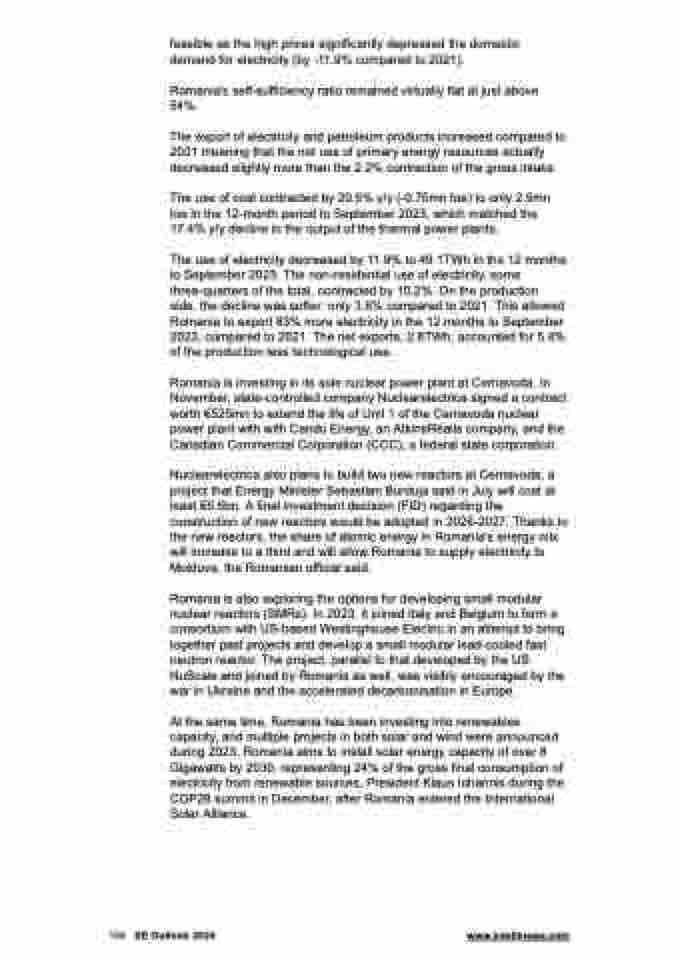Page 154 - bne IntelliNews SE Outlook Regions 2024
P. 154
feasible as the high prices significantly depressed the domestic demand for electricity (by -11.9% compared to 2021).
Romania's self-sufficiency ratio remained virtually flat at just above 54%.
The export of electricity and petroleum products increased compared to 2021 meaning that the net use of primary energy resources actually decreased slightly more than the 2.2% contraction of the gross intake.
The use of coal contracted by 20.5% y/y (-0.75mn toe) to only 2.9mn toe in the 12-month period to September 2023, which matched the 17.4% y/y decline in the output of the thermal power plants.
The use of electricity decreased by 11.9% to 49.1TWh in the 12 months to September 2023. The non-residential use of electricity, some three-quarters of the total, contracted by 10.2%. On the production side, the decline was softer: only 3.6% compared to 2021. This allowed Romania to export 83% more electricity in the 12 months to September 2023, compared to 2021. The net exports, 2.8TWh, accounted for 5.4% of the production less technological use.
Romania is investing in its sole nuclear power plant at Cernavoda. In November, state-controlled company Nuclearelectrica signed a contract worth €525mn to extend the life of Unit 1 of the Cernavoda nuclear power plant with with Candu Energy, an AtkinsRéalis company, and the Canadian Commercial Corporation (CCC), a federal state corporation.
Nuclearelectrica also plans to build two new reactors at Cernavoda, a project that Energy Minister Sebastian Burduja said in July will cost at least €6.5bn. A final investment decision (FID) regarding the construction of new reactors would be adopted in 2026-2027. Thanks to the new reactors, the share of atomic energy in Romania's energy mix will increase to a third and will allow Romania to supply electricity to Moldova, the Romanian official said.
Romania is also exploring the options for developing small modular nuclear reactors (SMRs). In 2023, it joined Italy and Belgium to form a consortium with US-based Westinghouse Electric in an attempt to bring together past projects and develop a small modular lead-cooled fast neutron reactor. The project, parallel to that developed by the US NuScale and joined by Romania as well, was visibly encouraged by the war in Ukraine and the accelerated decarbonisation in Europe.
At the same time, Romania has been investing into renewables capacity, and multiple projects in both solar and wind were announced during 2023. Romania aims to install solar energy capacity of over 8 Gigawatts by 2030, representing 24% of the gross final consumption of electricity from renewable sources, President Klaus Iohannis during the COP28 summit in December, after Romania entered the International Solar Alliance.
154 SE Outlook 2024 www.intellinews.com


